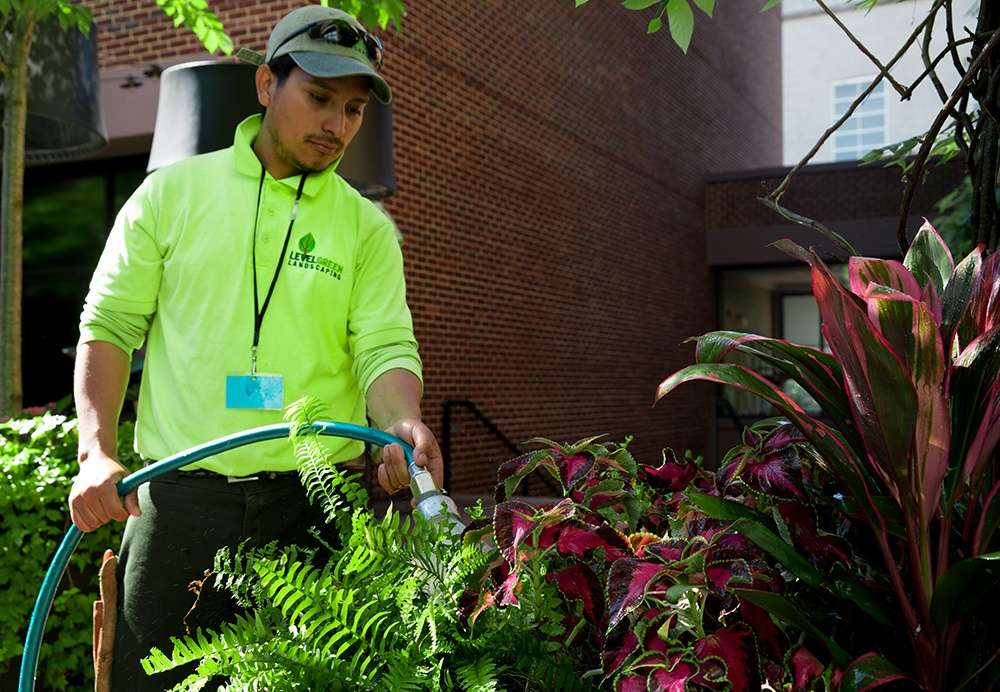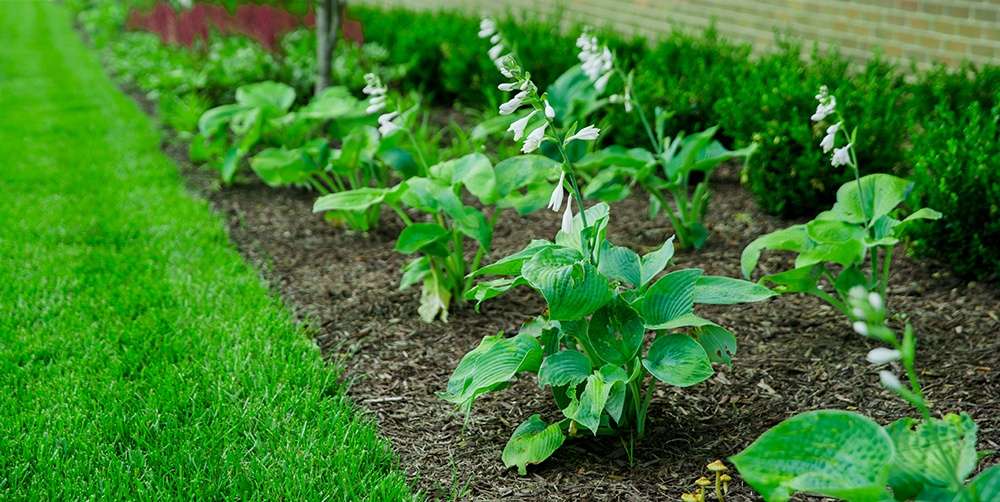The great thing about perennial plants is they keep coming back — like great friends you never get tired of having over.
Not only do they show up, reliably and beautifully, every year, but they actually get bigger and more plentiful. Up to a point.
After a few years, perennials need dividing and transplanting in order to stay happy and healthy.
That means more plants to spread around your commercial property — without spending any more money. And fall is the perfect time to transplant perennials in Maryland.
Let’s take a look at transplanting perennials in fall.
Why Transplant Perennials?
There are lots of reasons to divide and transplant the perennials on your commercial property:
- It keeps them healthy. Many perennials grow quickly, forming large clumps. If you don't divide them every three to four years, these clumps can die out in the middle, leaving an unsightly bare hole. And overcrowded plants become stressed. The soil can become depleted of nutrients. Fungi and pests can invade without proper air circulation.
- It keeps them beautiful. Overcrowded perennials often have fewer or smaller flowers.
- It keeps them tamed. Some perennials grow out of bounds quickly. Dividing these plants helps keep them in check.
- It creates more plants. Dividing and transplanting perennials leaves you with more plants — perfect for adding to other high-visibility places on your commercial property. For free!
Why Fall Is A Great Time To Transplant Perennials
Fall feels like the end of the growing season, but it’s the perfect time to divide and transplant perennials. Why?
- Divide a plant in the fall, when it’s not flowering, and all the plant's energy can go to root and leaf growth.
- Dividing and transplanting in the fall gives plants more time to set new roots before the hot, sunny growing season.
- Perennials can get a bit stressed from dividing. They’ll recover better from the shock in cool, moist conditions.
- Fall offers fairly steady soil temperatures and moisture, which is good for the rapid root development plants need to get established in a new space.
Plants To Transplant In The Fall
Many of the plants commonly used in commercial property landscaping are great candidates for dividing and transplanting in the fall: hosta, black-eyed Susan, daylily, yarrow, purple coneflower, astilbe. Most perennials that bloom in spring or summer prefer fall transplanting.
One exception is ornamental grasses. Most of them prefer spring transplanting.
A Few Transplanting Tips
Transplanting plants isn’t hard, but there are a few tips to help ensure plants are happy in their new spots:
Does The Plant Need Dividing?
When you decide to move a plant to a different spot, check to see if it also needs dividing. If the perennial has a dead area in the center but healthy growth around the edges, it may be time to divide it, not just move it.
For many plants, it’s as easy as cutting the crown into pieces and discarding the dead center.
Transplant On A Cloudy Day
Choose a day that's overcast or even rainy for transplanting. Digging up the plant will result in some root loss, so you'll want to reduce stress on the plant as much as possible.
Strong sun and wind are hard on new transplants and stresses them just as they’re adjusting to their new spot.
Don’t Move A Plant That’s Blooming
A plant in bloom needs lots of water and nutrition because it’s expending energy, so it’s not an ideal time to cut its roots.
Dig And Fluff
When you dig up a plant for transplanting, aim for a few inches outside the plant’s drip line. If you hit roots, move farther out.
Dig as deep as necessary to undercut the roots and pop the plant out of the hole. The more roots you keep intact, the better.
Then dig a hole twice as wide as the root ball, but no deeper. Fluff up the soil with a garden fork and mix in some compost. Don’t add fertilizer, though — it can burn the plant’s roots.
Mulch And Water
Apply three to four inches of mulch around the base of each new plant and water well. Check on the plant every few days. If the top few inches of soil are dry, water again.

Can You Transplant Trees And Shrubs?
While transplanting perennial flowers, plants and ornamental grasses is a great idea, the same isn’t typically true for trees and shrubs.
At Level Green Landscaping, we don’t usually encourage our clients to transplant trees and shrubs unless they’re in great health and very good specimens.
Not all trees and shrubs respond well to transplanting, so we don’t guarantee the success or offer warranties on the trees and shrubs that we transplant.
The cost of transplanting can actually be more expensive than installing new shrubs and trees, especially when you consider the increased watering needs the new transplants require.
If there’s a spot on your property that needs trees or shrubs, it’s best to consider new plants.
Stretch Your Landscape Budget With Fall Transplanting
Transplanting some of your existing perennials is a win-win — it keeps your plants happy and healthy and creates new plants for no extra money.
Move plants to high-visibility areas of your commercial property to create even more curb appeal.
At Level Green Landscaping we provide commercial landscape maintenance services — including fall transplanting — in Maryland, Northern Virginia and Washington DC. Our clients include commercial, office, mixed-use, retail, HOA, condominium, municipality and institution properties.
We’d love to hear from you. Call us at 202-544-0968, or request a free consultation online to keep your commercial property looking great.



